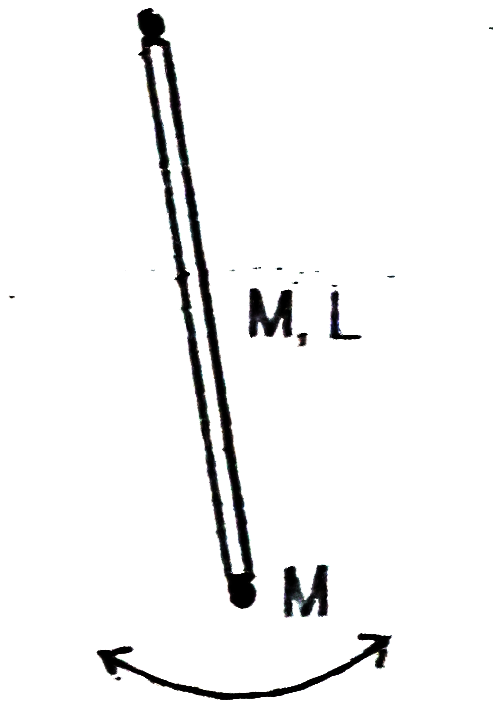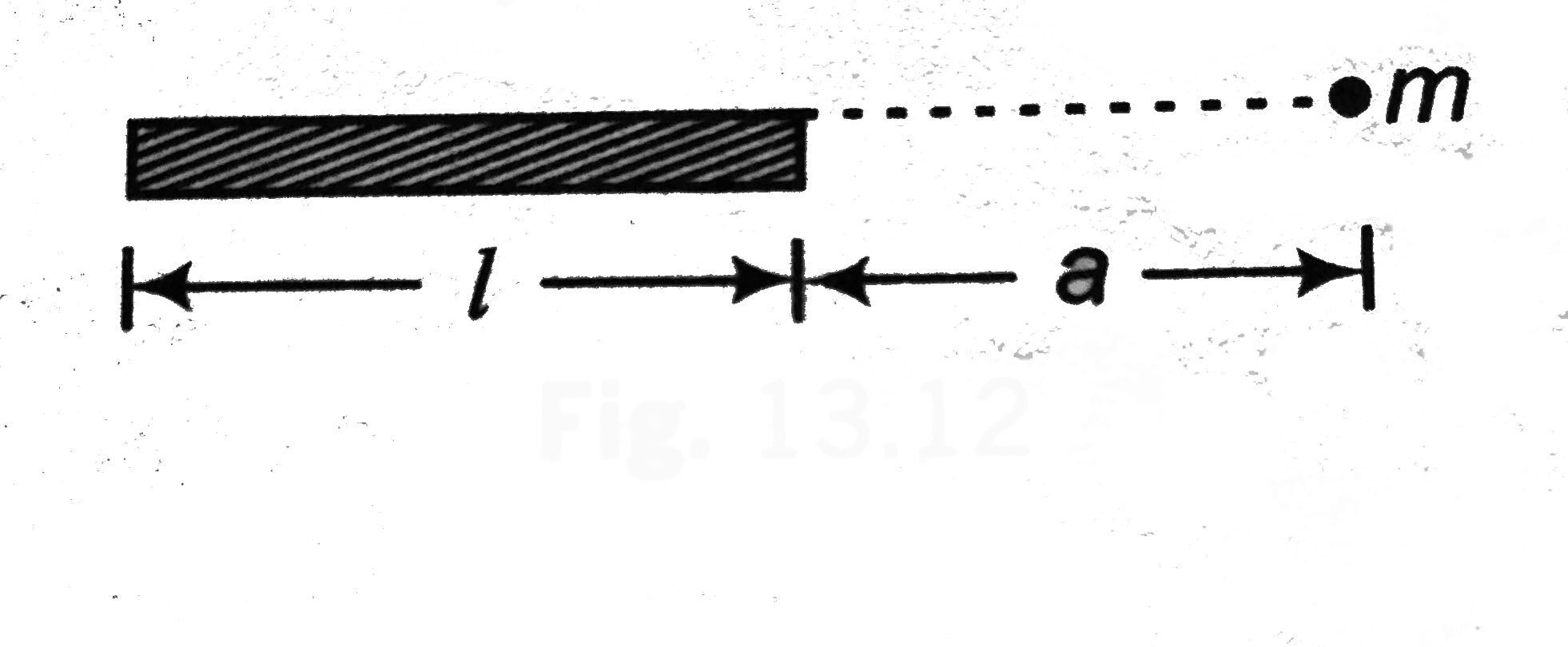Consider two cylindrical rods of indentical dimesnions, one of rubber and the other of steel. Both the rods are fixed rigidiy at one end to the roof. A mass M is attached to each of the free ends at the centre of the rods.
Both the rods will elongate but there shall be no perceptible change in shape
The steel rod will elongate and change shape but the rubber rod will only elongate.
The steel rod will elongate without any perceptible change in shape, but the rubber rod will elongate and the shape of the bottom edge will change to an ellipse.
The steel rod will elongate, without any perceptible change in shape, but the rubber rod will elongate with the shape of the bottom edge tapered to a tip at the centre.
The correct Answer is:D
To determine which rod will elongate more when a mass M is attached to the free ends of two cylindrical rods (one made of rubber and the other made of steel), we can follow these steps:
1. Understand the Problem: We have two cylindrical rods of identical dimensions: one made of rubber and the other made of steel. Both rods are fixed at one end, and a mass M is attached to the free ends.
2. Identify the Relevant Properties: The elongation of a rod under a load can be described using Young's modulus Y, which is defined as:
Y=StressStrain=F/AΔL/L0
where F is the force applied, A is the cross-sectional area, ΔL is the change in length (elongation), and L0 is the original length.
3. Determine the Forces: The force F acting on each rod due to the mass M is given by:
F=M⋅g
where g is the acceleration due to gravity.
4. Calculate the Elongation: The elongation ΔL of each rod can be expressed as:
ΔL=FL0AY
Since the dimensions of both rods are identical, the cross-sectional area A and the original length L0 are the same for both rods.
5. Compare Young's Modulus: The Young's modulus for rubber is significantly lower than that for steel. For example:
- Young's modulus for rubber (Yrubber) is approximately 0.01−0.1GPa.
- Young's modulus for steel (Ysteel) is approximately 200GPa.
6. Conclusion on Elongation: Since the elongation ΔL is inversely proportional to Young's modulus Y, the rod with the lower Young's modulus (rubber) will elongate more than the rod with the higher Young's modulus (steel). Therefore:
ΔLrubber>ΔLsteel
7. Final Statement: The rubber rod will elongate more than the steel rod when the same mass M is applied to both.
Y=StressStrain=F/AΔL/L0
where F is the force applied, A is the cross-sectional area, ΔL is the change in length (elongation), and L0 is the original length.
F=M⋅g
where g is the acceleration due to gravity.
ΔL=FL0AY
Since the dimensions of both rods are identical, the cross-sectional area A and the original length L0 are the same for both rods.
- Young's modulus for rubber (Yrubber) is approximately 0.01−0.1GPa.
- Young's modulus for steel (Ysteel) is approximately 200GPa.
ΔLrubber>ΔLsteel
Topper's Solved these Questions
- BOOK - NCERT FINGERTPS ENGLISHCHAPTER - MECHANICAL PROPERTIES OF SOLIDSEXERCISE - CORNER15videos
MECHANICAL PROPERTIES OF SOLIDS
- BOOK - NCERT FINGERTPS ENGLISHCHAPTER - MECHANICAL PROPERTIES OF SOLIDSEXERCISE - Hooke'S Law3videos
MECHANICAL PROPERTIES OF SOLIDS
- BOOK - NCERT FINGERTPS ENGLISHCHAPTER - MECHANICAL PROPERTIES OF SOLIDSEXERCISE - HOTS8videos
MECHANICAL PROPERTIES OF SOLIDS
- BOOK - NCERT FINGERTPS ENGLISHCHAPTER - MECHANICAL PROPERTIES OF FLUIDSEXERCISE - NCERT Exemplar5videos
MECHANICAL PROPERTIES OF FLUIDS
- BOOK - NCERT FINGERTPS ENGLISHCHAPTER - MOTION IN A PLANE EXERCISE - Assertion And Reason15videos
MOTION IN A PLANE
Similar Questions
One end of a metal rod is kept in a furnace. In steady state, the temperature of the rod
View SolutionOne end of a metal rod is kept in a furnace. In steady state, the temperature of the rod
View SolutionA thin rod of negligible mass and area of cross section S is suspended vertically from one end. Length of the rod is L0 at T∘C . A mass m is attached to the lower end of the rod so that when temperature of the rod is reduced to 0∘C its length remains L0 Y is the Young’s modulus of the rod and α is coefficient of linear expansion of rod. Value of m is :
View SolutionTwo particles of mass m each are attached to a light rod of length d, one at its centre and the other at a free end, The rod is fixed at the other end and is rotated in a plane at an angular speed ω. Calculate the angular momentum of the particle at the end with respect to the particle at the centre
View SolutionTwo equal rods joined at one end are kept on a smooth surface as shown and released Trajectory of centre of mass of both rods is :−
 View Solution
View SolutionA light rigid rod of length l is hinged at one end and it is free to rotate in a vertical plane. A particle of mass m is attached to another end of the rod. The particle is released from rest at its highest point. Select the correct statement out of the following
View SolutionA uniform rod ofmass M and length L is hanging from its one end free to rotate in a veritcal plane.A small ball of equal mass is attached of the lowe end as shown. Time period of small oscillations of the rod is
 View Solution
View SolutionA mass m is at a distance a from one end of a uniform rod of length l and mass M. Find the gravitational force on the mass due to the rod.
 View Solution
View SolutionTwo rods A and B of same area of cross-section are joined together end to end The free end of the rod A is kept in melting ice at 300 K and free end of B rod at 400 K. The rods are of the same length. The conductivity of A is 3 times that of B. Calculate the temperature of the junction of the rods.
View SolutionOn heating one end of a rod the temperature of the whole rod will be uniform when .
View Solution

